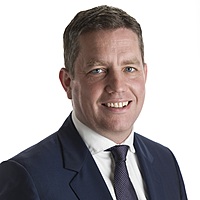Desperately seeking hedges

Resonant Asset Management
While the future correlation structure of asset classes sounds rather pedestrian, it is in fact key to the outcomes for diversified long-term multi-asset portfolios over the next five years.
In this note we discuss the possible future trajectories for the relationship between rates and equities, focusing on the US market, which tends to drive outcomes for investors beyond its borders.
The long term
Balanced portfolios typically rely on the hedging properties of rates vs growth assets to protect portfolios in times of stress.
To us, this particular market period feels far from a stressed environment, and certainly not what we have witnessed previously in 2008, despite some rather alarmist commentary.
While the US macro data can be best described as lackluster, it is by no means indicating imminent recession conditions at this stage. In fact, we would broadly categorise the current environment as “mid-cycle”, in stark contrast to the environment in 2007 with the shadow banking system funding diverse high risk projects way beyond what could be considered a rational decision.
What does concern, however, is where the economy goes to from here. In particular, for managers of diversified portfolios, which asset classes are likely to provide suitable hedging properties should we shift from mid-cycle to peak cycle over the next while.
The relationship between rates and equities
 Figure 1: US Equities, Eurodollar futures (Source: Resonant Asset Management, Quandl)
Figure 1: US Equities, Eurodollar futures (Source: Resonant Asset Management, Quandl)
Figure 1 above highlights the long-term relationship between equity market allocation decisions and cash rate policy expectations.
The equity risk premium is the long-term return in excess of the risk-free rate, that investors in aggregate demand to invest in growth equities at the expense of defensive cash. It reflects investors aggregate appetite for risk.
As you move up the chart, investors become increasingly reckless, taking risk for a lower demanded return. Perhaps the best example of investor recklessness was in September 2000 at the height of the tech bubble – the equity risk premium was negative! While a negative risk premium may run counter to logic, human behaviour in aggregate is rarely as rational as you might be led to believe.
In stark contrast to this, the peak level of conservativism in the equity market was around late 2011. So while surprise is expressed as to sheer explosiveness of the S&P return since that point, in the context of a normalisation from peak conservativism, it should make more sense.
Broadly speaking, there are two distinct and opposing drivers of the equity risk premium:
- Economic conditions: As the business cycle approaches peak activity, the equity risk premium compresses, as investors demand a lower annualised return to take equity risk, driven by their optimism for company earnings to exceed expectations.
- Rates: As rates are cut, the equity risk premium compresses, as investors are forced up the risk spectrum, and yields on growth assets compress.
Typically central banks are reactive to data, typically focusing on inflation targets, much more so than asset markets such as equities.
In this vein, interest rates are in theory a counter-cyclical tool to smooth the inflation cycle, and hopefully the business cycle, assuming the relationship between inflation and the business cycle holds.
Inflation expectations
Are softening. The common interpretation is that inflation is mainly a cyclical phenomenon, but there is much to suggest that the forces inhibiting inflation in this business cycle are structural, for instance the impact of technology. The answer is probably a mixture of both, though the composition increasingly favours structural over cyclical.
Under this backdrop, will the Fed succeed in generating the desired inflation outcome? If the answer is no, and the business cycle, which is not in retreat, but far from it, with full employment, healthy GDP growth, is twinned with rate cuts, what are the hedging assets of the future that protect balanced portfolios from drawdowns?
If there is a dislocation in the traditional relationship between asset markets and rates (as we have started to see in figure 1 above over 2019), how does this story play out?
Wither the hedging assets
As the situation progresses, we eventually reach an endgame where duration no longer provides the same hedge to economic recessions as might ordinarily be the case. And the central banks are misguided in trying to drive inflation outcomes out of kilter with a modern, increasingly productive, technology-driven economy.
It won’t surprise anyone that under this backdrop, gold and other alternative hedges are being bid up aggressively. We think this situation will persist while and only while the Fed is looking to cut rates, in an environment modest but far from recessionary activity, and lukewarm expected inflation.
Select junior gold miners are the best means of playing this theme, share prices are yet to respond fully to the price levels in the spot market, particularly given the Australian dollar is still languishing below 70c, which means the futures gold price in local currency, is well over $2000 AUD (see figure 2 below).
 Figure 2: Gold Futures, front contract, in AUD (source: Quandl)
Figure 2: Gold Futures, front contract, in AUD (source: Quandl)
2 topics

Nick has over 20 years of experience in markets, including 7 years at Citigroup as Head of Australian Quant Research, and 2 years at the CFS GAM Australian Core equities fund. He is CIO and co-PM of Resonant’s multi-asset SMA’s with direct stocks.
Expertise

Nick has over 20 years of experience in markets, including 7 years at Citigroup as Head of Australian Quant Research, and 2 years at the CFS GAM Australian Core equities fund. He is CIO and co-PM of Resonant’s multi-asset SMA’s with direct stocks.
